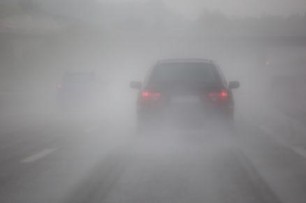General Insurance Blogs, Articles & Updates by - Magma HDI
Have us call you
- RENEW YOUR POLICY
- BUY NEW POLICY

Five effective benefits of implementing the Pomodoro Technique
There are several techniques for time management out there, but as tasks pile up and burdensome thoughts loom, sustaining momentum is critical. If you're concerned about the time factor, the Pomodoro Technique might assist you in completing your to-do list.
Francesco Cirillo, a university student in the 1980s, developed a practice of utilising a tomato-shaped kitchen timer to keep himself motivated while studying. As a result, the Pomodoro technique was developed – Pomodoro in Italian means a Tomato!
Individuals from different walks of life have used this strategy to overcome procrastination. Today, we will see how it works and how it can benefit you in five ways. Let's begin, shall we?
Steps to practice the technique:
Before we begin, let us tell you, here, one Pomodoro is equivalent to 25 minutes.
• Create a to-do list for the day
• Determine the number of Pomodoros you will devote to each activity
• Set the timer to one Pomodoro
• Concentrate entirely on that activity until the timer goes off
• Take a break of 5 minutes
• Proceed to the next Pomodoro after the break
• Take a longer rest after every fourth Pomodoro
Five benefits of the Pomodoro Technique.
1. Helps you break the habit of procrastination:
This technique will help you battle procrastination and stay focused. You know when and how long you have to work using this strategy, so you don't have to convince yourself into working since it's already planned for you.
The Pomodoro method has helped many persistent procrastinators get free of their habit and genuinely enjoy their job throughout the years.
2. Fights distractions:
The Pomodoro technique helps you create a habit of pushing the distracting tasks such as scrolling your social media feed, checking emails, and other stuff by moving them to the 5-minute window you get after each Pomodoro. You will struggle initially, but once you are hooked to it, say goodbye to the distractions.
3. Work seems like a game:
The timer serves as a countdown for the job at hand, and you'll feel as though you're racing against time to "complete a level." With such an approach, the Pomodoro method improves your productivity by providing fun and breaking up dull periods with a challenge.
4. Keeps your motivation going:
It's an exhilarating race to complete tasks before you run out of time. This thrill drives you to work quicker, even when you typically slow down. These minor surges of inspiration help you stay motivated and keep you focused. You are your competition.
5. Decreases physical and mental discomfort:
One of the huge pros of the Pomodoro Technique is the frequent breaks. After each Pomodoro, you can get up to stretch your legs/back, hydrate, or just stroll around. These short activities help you reduce the onset of physical discomfort caused by sitting at a desk for a prolonged period. Similarly, allowing your mind to wander momentarily throughout the day decreases daytime fatigue, and when you feel physically and mentally well, you get more done.
The Pomodoro Technique allows you to immediately get in the zone and give your best in the shortest amount of time. A considerable number of people have implemented this strategy to date; many have even mentioned this technique being the key to establishing work/life balance in their books.
Apart from maintaining a perfect time management regimen, checking your health and fitness is equally essential. Focus on consuming a healthy diet, following a regular exercise routine, and adopting practices that further safeguard your health and mental fitness. Invest in a good health insurance cover and post purchasing, never miss out on the health insurance policy renewal. Keep it up-to-date to enjoy the benefits without interruption.
So, start today. Make your to-do list now and bring a positive change in your life.
Click HERE for your health insurance policy renewal.
Disclaimer: The information provided above is for illustrative purposes only. To get more details, please refer to policy wordings and prospectus before purchasing a policy.

Running a food delivery business? Here are some important tips you must follow
Technology is paving the way for convenience in all businesses, and even food delivery businesses are taking advantage of it. In today’s fast-paced life, people find online food services most helpful. They love it when their favourite dish is ordered and delivered through online food delivery apps.
According to studies, the food delivery business is rapidly growing in India at a 25 to 30% rate. This opens yet another stream for entrepreneurs to dive in to cater to the expectations of urban middle-class Indians. If you are thinking about running a food delivery business, here are a few essential tips you should consider.
1. Get a targeted audience:
Before setting your food delivery business, you need to spot your potential customers, their buying behaviour and eating habits to give you better insights about
• What do they like to order, which cuisine attracts them more?
• When do they place orders the most, lunchtime, evening snacks, or dinnertime?
• Where is the maximum order coming from? Is it their homes or the workplace?
2. Be discoverable online:
Since the large urban population places online food orders, having a mobile application makes your businesses discoverable and accessible to potential customers. But, to get an edge over your competitors, you need to carefully address the frustrations and expectations of customers in the food business. Have an impactful website or app and add it with high-quality images and a variety of food and restaurant menus. Keep the user-friendly interface right from searching for restaurants to selecting the dish and finally making the payment and getting the food delivered. Regularly update your app and website to fix the bugs and add security patches to provide uninterrupted services.
3. Delivery network:
Hire delivery staff that are experienced and reliable. Verify all the documents such as the valid driving licence or previous work experiences before appointing them. Remember that the delivery vehicles should also have valid registrations papers and 2 wheeler insurance. In haste to deliver the order, don't allow staff to break the laws. So, if you don't have an insurance policy, you can quickly buy 2 wheeler insurance online to save time and keep running your business uninterrupted.
4. Legal license and documentation:
To run any business, you need to have proper licenses and government approvals. Get all the government-authorized documents such as shop act license, health trade license, NOC from the municipality, GST registration, trademark registration, business permit, and E-commerce agreement.
5. Marketing and promotions:
You must have a perfect brand name and a tagline to ensure that it catches the eyes immediately. Then, design a brand guideline, specify all the important details like logo, colours, and highlight your business’ USPs that make you better than competitions.
Consider implementing launch ads marketing campaigns with some discount to draw traffic to your website. You can also flash exclusive festive offers or weekend bonanzas to attract more customers. Discuss these offers and terms with your partner food joints to collaborate and promote these offers on your official social media pages.
With every repeat order and a new customer, you taste the success of the business. Remember to impart adequate training to your delivery staff on hygiene, personal care, healthy customer interactions with other drivers and food joint owners as they represent your brand all the time. Also, consider their well-being, ensure they drive safely, and your vehicles are insured. In case you haven't thought yet on these lines, consider taking a 2 wheeler insurance online.
The food delivery business has made it easier for everyone to buy from the local restaurants without going out. The growth of the 'cashless economy' has also contributed significantly to the digital food ordering business. So, capitalize your food delivery business, bring small restaurant owners, deliverymen, and technology together and turn it into a big cloud kitchen to reach every home and win every heart!
Click HERE to buy a 2 wheeler insurance online with a few clicks.
Disclaimer: The information provided above is for illustrative purposes only. To get more details, please refer to policy wordings and prospectus before purchasing a policy.

The complete guide to learning boxing and training your muscles rigorously
When it comes to a superb full-body workout that can help you grow muscle while also improving your cardio, look no further. Boxing has lately gained popularity as physical activity, particularly among women. There are multiple health and fitness advantages to boxing workouts. It would not only keep your fitness at its optimum, but can do wonders for your mental health as well.
It's a terrific method to enhance physical fitness while simultaneously engaging your mind and body in stimulating activities. People who box as an exercise commonly use a punching bag to help reduce the risk of injuries. However, you must also have the best personal accident policy in India to protect yourself in the event of an accident.
What are the benefits of boxing exercises in terms of health and fitness?
1. Weight loss:
When it comes to burning calories quickly, boxing is a close competitor to exercises like jogging and cycling. It is a high-intensity endurance activity for everybody, regardless of age or physical fitness level. In other words, no matter how great of an improvement you make in your endurance through boxing, you'll always be burning calories.
2. Improved coordination:
Although it takes significant physical effort, boxing necessitates mental concentration and demands high focus. It holds the objective of hitting your opponent while avoiding hurting yourself. To be safe and perform well, you must have excellent hand-eye coordination, as well as good footwork and balance. When competing in boxing, you must use every part of your body in coordination, uncommon in other sports.
Understanding this and putting it into practice throughout your training will significantly enhance your coordination and awareness in the ring and in daily life. In addition, boxing can help you develop greater self-awareness and confidence as physical activity.
3. Stress reduction:
Boxing is an excellent technique to work out while releasing stress in the body and expelling frustrations from the day's activities. Releasing tension through physical interaction is an effective method of stress reduction. In addition, you may experience increased joy due to the release of endorphins that elevate your mood.
4. Shaping your body muscles:
Boxing needs you to engage every muscle in your body by moving it constantly. You use your muscles to gain power by throwing punches and shifting your legs to change positions. As you train rigorously, your muscle mass and strength will grow together. Activating your complete body, including your core, will result in a more active and healthier you.
5. Improved self-discipline and mental resilience:
The intense nature of boxing workouts makes them an excellent way to quickly build both physical and mental toughness. It will push you to your boundaries, asking you to do things you didn't realise you could achieve before starting. Gradually you will start gaining confidence in yourself, and the regular routine will bring discipline to your day-to-day activities as well.
Boxing is the most enjoyable form of exercise you will ever experience which is one of the most crucial aspects of any fitness regimen. When it comes to boxing, having the best personal accident policy in India is usually a good idea because it keeps you protected from injuries that could hamper your progress or training.
Click HERE to buy the best personal accident policy in India.
Disclaimer: The information provided above is for illustrative purposes only. To get more details, please refer to policy wordings and prospectus before purchasing a policy.

Tips to minimise the risks of driving in fog
There are times when driving becomes challenging due to extreme weather. While you might be a seasoned all-terrain driver, it is still a better choice to park your car and wait for the rough weather to pass. But if you have no other option, then inculcating some of the steps mentioned below will help you prevent accidents on the road.
1. Follow a Slow and Steady pace:
While it is no surprise that speeding is dangerous, one must be extra cautious in foggy conditions. Since most of your vision is blocked due to the dense fog, and you might not know what's ahead of you, it is best to stick to the lower end of your speedometer.
2. Distance between vehicles:
It is always a safer idea to stay a considerable distance away from the vehicle in front of you. As mentioned, due to low visibility, it is difficult to predict what might be ahead. So maintaining the said distance can be a boon in case of sudden breaks.
3. Stick to low beams:
Since visibility is the biggest challenge of driving in fog, low beams are your best shot at being able to see what's right in front of you. High beams would serve no useful purpose as the fog will mask everything ahead of you.
4. Follow the line:
There is always a risk of losing the road during fog. A safety hack you can try is to stick to the lines on the side of the road. This will help you stay within the lane and not lose track of the road.
5. Use wipers:
Using the wipers constantly to ensure a clear vision is a must. Always replace your wipers if the rubber is worn out to avoid the hassle if any situation arises.
6. Keep windows open:
Keeping your windows open is a huge advantage because it gives you an idea of the traffic situation outside and helps you hear other cars and vehicles on the road.
7. Turn signals:
The traffic behind you will depend on your taillight for navigation. Ideally, you should use your turn signals way before you typically would. This will give the vehicles behind you ample time to change directions or hit the brakes.
7. Turn signals:
The traffic behind you will depend on your taillight for navigation. Ideally, you should use your turn signals way before you typically would. This will give the vehicles behind you ample time to change directions or hit the brakes.
8. Parking lights:
If you decide to park your vehicle, do it away from the road and turn on your parking lights so that the traffic coming from either side can see your car and avoid a collision.
These are a few tips that you can follow if you are driving through fog. Your safety is of utmost priority, so avoid driving in fog as much as you can. As a responsible driver, it is your duty to be safe and keep your fellow vehicles safe. Ensure good online motor insurance is always backing you, and your vehicle's safety is not compromised. During odd hours, if your car breaks down, you should be able to bank on your insurance company to protect you against financial burdens.
To learn about online motor insurance, click HERE .
Disclaimer: The information provided above is for illustrative purposes only. To get more details, please refer to policy wordings and prospectus before purchasing a policy.


